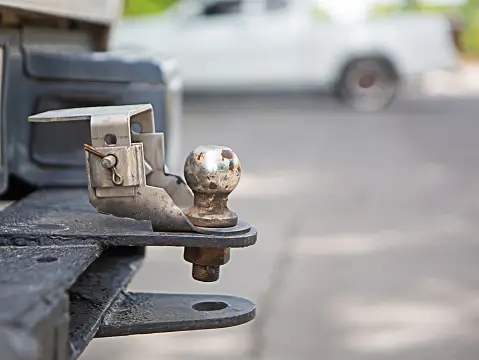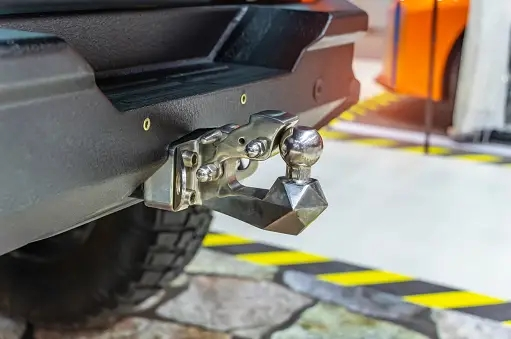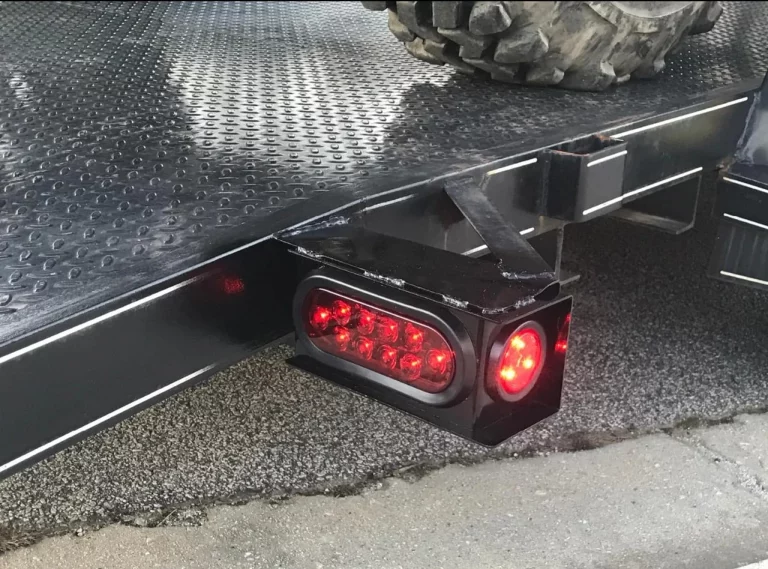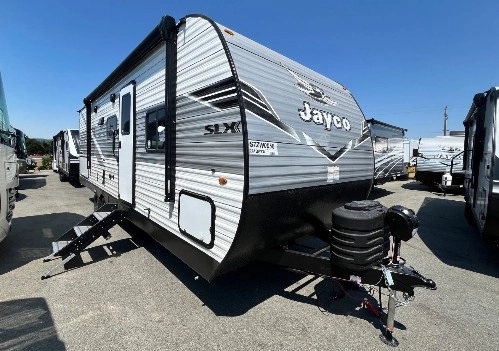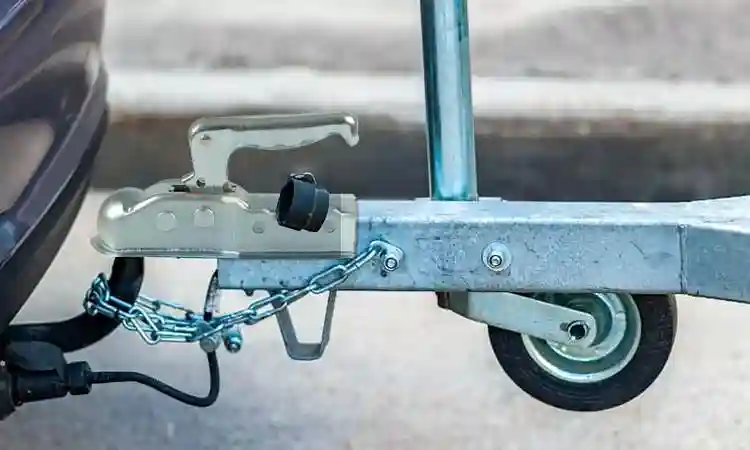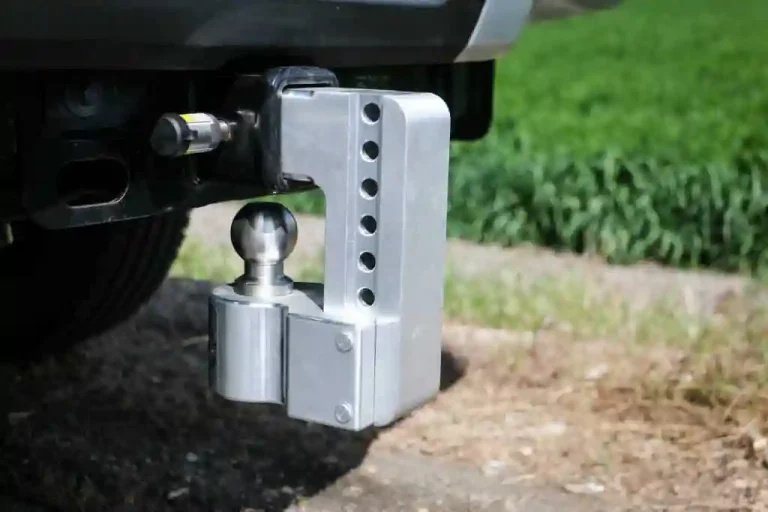When it comes to towing, ensuring you have the right equipment is paramount. One critical component often overlooked is the trailer hitch ball. The right trailer hitch ball can mean the difference between a smooth towing experience and a difficult, possibly dangerous one. This article will guide you through choosing the perfect trailer hitch ball for your needs by explaining its importance, types, and how to make the best selection.
What is a Trailer Hitch Ball?
Definition and Purpose
A trailer hitch ball is a round device that connects the trailer to the car that is pulling it. This important part is attached to the pulling vehicle’s hitch and connects to the trailer’s coupler. The main job of this part is to keep the trailer connected to the car while still letting it turn easily while towing.
Common Uses and Applications
There are different ways to use trailer hitch balls for pulling. Tow boats, campers, utility trailers, and tool trucks without them would not be possible. It is safe and easy to move goods, recreational vehicles, or even animals with these hitch balls. They make it possible to haul big loads firmly.
Importance in Towing
The importance of a trailer hitch ball in towing cannot be overstated. A properly selected and installed hitch ball ensures that your trailer remains firmly attached to your vehicle, reducing the risk of accidents. It allows for better control and maneuverability of the trailer, making your driving experience safer and more predictable.
Types of Trailer Hitch Balls
Standard Hitch Balls
Standard hitch balls are the most common type found on the market. They are suitable for light to moderate towing needs, such as small utility trailers or light campers. These hitch balls typically come in standard sizes that match most vehicle hitches, making them a versatile and convenient option for many drivers.
Heavy-Duty Hitch Balls
For those who need to tow significantly heavier loads, heavy-duty hitch balls are the way to go. These hitch balls are made from more robust materials and are designed to handle greater weight capacities. They are ideal for towing large boats, heavy equipment trailers, and larger RVs. When dealing with heavy-duty towing, selecting the right hitch ball is crucial for safety and performance.
Specialty Hitch Balls
Specialty hitch balls cater to specific towing requirements that standard or heavy-duty balls may not adequately address. These can include hitch balls designed for unique trailer couplers, adjustable hitch balls that can fit different heights, or those with specific features like anti-sway mechanisms. Understanding your specific towing needs can help determine if a specialty hitch ball is necessary.
How to Choose the Right Trailer Hitch Ball
Assessing Your Towing Needs
Choosing the right trailer hitch ball starts with assessing your towing needs. Understanding what you will be towing and how frequently will guide you in selecting the correct hitch ball type and size.
Weight Capacity Considerations
One of the most critical factors is the weight capacity of the hitch ball. Each hitch ball has a maximum weight it can safely handle, known as its Gross Trailer Weight (GTW) rating. Ensure that the hitch ball you choose exceeds the weight of the trailer and its contents. Using a hitch ball with insufficient weight capacity is not only unsafe but also illegal in many jurisdictions.
Vehicle Compatibility
Another vital aspect is ensuring vehicle compatibility. The hitch ball must correctly match the tow vehicle’s hitch receiver size and specifications. Check your vehicle’s owner’s manual or the hitch manufacturer’s guidelines to confirm compatibility. This step prevents any mismatches that could compromise towing safety and performance.
Materials and Durability
The material of the trailer hitch ball significantly impacts its performance and longevity. Different materials offer various benefits and drawbacks that should be considered based on your towing needs.
Steel vs. Aluminum
Steel and aluminum are the two most common materials used in trailer hitch balls. Steel hitch balls are renowned for their strength and durability, making them suitable for heavy-duty towing. Aluminum hitch balls, on the other hand, are lighter and resistant to rust, making them a good choice for standard towing. However, they may not withstand extreme weight as well as steel options.
Corrosion Resistance
Considering corrosion resistance is essential, especially if you frequently tow in harsh weather conditions or near saltwater. A chrome-plated or stainless steel hitch ball is more resistant to corrosion and rust than bare steel, offering longer-lasting performance. Coatings and finishes can provide added protection and longevity, ensuring that your hitch ball remains in good condition even after extensive use.
By understanding the different types of trailer hitch balls, assessing your towing requirements, and considering materials and durability, you can make an informed decision to enhance your towing experience. Selecting the perfect trailer hitch ball ensures a safe, efficient, and hassle-free towing journey every time.
Go Trailer Parts, a professional trailer parts manufacturer based in Qingdao, China, offers a wide range of trailer hitch balls that are designed to provide safe and reliable towing solutions. These trailer hitch balls are specifically designed for towing trailers or engaging in outdoor activities such as camping. They serve as a crucial connection point between the trailer and the towing vehicle, ensuring secure traction and transportation. Go Trailer Parts provides trailer hitch balls in various sizes and specifications to accommodate different towing requirements. With their commitment to safety and quality, Go Trailer Parts ensures that their trailer hitch balls are manufactured to the highest standards, providing customers with peace of mind during towing operations. Whether for personal or commercial use, Go Trailer Parts’ trailer hitch balls are a trusted choice for efficient and secure towing. Their Puck System Gooseneck Hitch Ball Kit 2-5/16 Inch Gooseneck Ball are both their popular products with high quality.
Installation Guide for Trailer Hitch Balls
Necessary Tools and Equipment
Installing a trailer hitch ball requires some basic tools and equipment to ensure a secure and safe setup. You’ll need wrenches, a torque wrench, sockets, possibly a ball mount, and grease. Having a clean rag and some safety gloves will also be helpful. Ensuring you have the right equipment from the start will make the installation process smoother and more efficient.
Step-by-Step Installation Process
A proper installation process ensures the hitch ball remains secure and functions correctly. Below is a detailed step-by-step guide to assist you.
Prepping the Vehicle and Equipment
Begin by ensuring both the vehicle and hitch ball are clean and free from debris. Place the vehicle on a level surface and engage the parking brake. Check the hitch receiver and ball mount for any signs of wear or damage. It’s crucial to address any issues before proceeding to prevent future problems.
Attaching the Hitch Ball
Position the ball mount in the receiver and align the hitch ball hole with the mount. Insert the hitch ball shank through the hole and thread the nut onto the shank from the bottom. Hand-tighten the nut initially to ensure it is in the correct position. Use your wrench to further tighten the nut, alternating sides to maintain even pressure.
Securing the Connections
Finally, use a torque wrench to tighten the hitch ball nut to the manufacturer’s specified torque settings. This step is crucial to ensure the hitch ball is securely attached and will not come loose during towing. Additionally, applying grease to the hitch ball before use can reduce friction and wear, ensuring a smoother connection between the ball and the trailer coupler.
Safety Tips and Best Practices for Using Trailer Hitch Balls
Regular Maintenance Checks
Regular maintenance checks are essential for ensuring the longevity and safety of your trailer hitch ball. Make it a habit to inspect the hitch ball before and after every towing trip.
Inspecting for Wear and Tear
Check the hitch ball for any visible signs of wear and tear, such as cracks, rust, or deformation. Even minor damage can compromise the hitch ball’s integrity and lead to dangerous towing situations. Replace the hitch ball immediately if any damage is detected.
Proper Greasing Techniques
Using proper greasing techniques can prolong the life of your hitch ball. Apply a high-quality grease to the hitch ball before connecting the trailer coupler. Grease reduces friction, enabling smoother pivoting and lessening wear on both the ball and coupler. Clean off any old grease and reapply fresh grease regularly to maintain optimal performance.
Safe Driving Tips While Towing
Driving with a trailer requires added awareness and caution. Employing safe driving practices ensures both your safety and the safety of others on the road.
When towing, always maintain a safe distance between your vehicle and the one ahead of you. Trailers increase stopping distance, so giving yourself extra space can prevent rear-end collisions. Additionally, avoid sudden maneuvers and sharp turns that can cause the trailer to sway or jackknife. Use your mirrors frequently to monitor the trailer and ensure it stays aligned with your vehicle.
Finally, always adhere to speed limits specific to towing vehicles, as towing at high speeds can increase the risk of accidents due to reduced control. Taking these precautions will enhance your driving safety and ensure a hassle-free towing experience.
Frequently Asked Questions about Trailer Hitch Balls
How do I measure the hitch ball size?
The hitch ball size is determined by measuring the ball diameter, shank diameter, and the shank length. The ball diameter is the widest part of the ball, typically available in sizes like 1-7/8 inches, 2 inches, or 2-5/16 inches. The shank diameter is the width of the hitch ball’s threaded part that fits into the ball mount. It must match the hole size of your ball mount. Lastly, the shank length should be long enough to thread the nut securely below the mount while maintaining enough threads to ensure tight fastening.
Can I use any hitch ball with my trailer hitch?
No, you cannot use just any hitch ball with your trailer hitch. It is vital to ensure that the hitch ball matches thespecifications of your trailer coupler and ball mount. The ball’s diameter must fit the trailer’s coupler size, and the shank diameter must fit the ball mount’s hole size. Additionally, the weight rating of the hitch ball must exceed the combined weight of your trailer and cargo. Failing to match these specifications can result in unsafe towing conditions and potential accidents.


